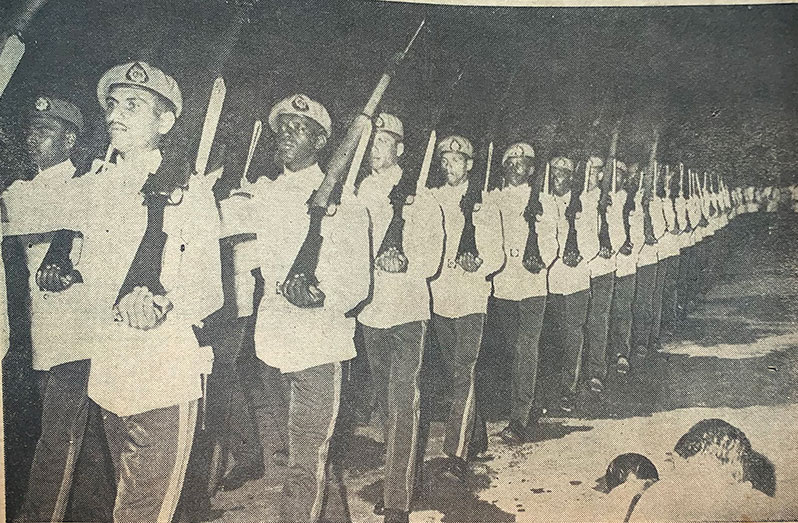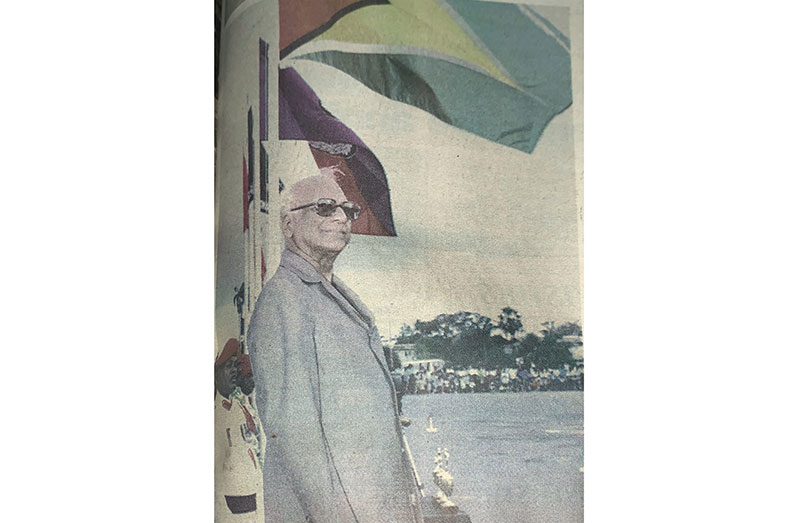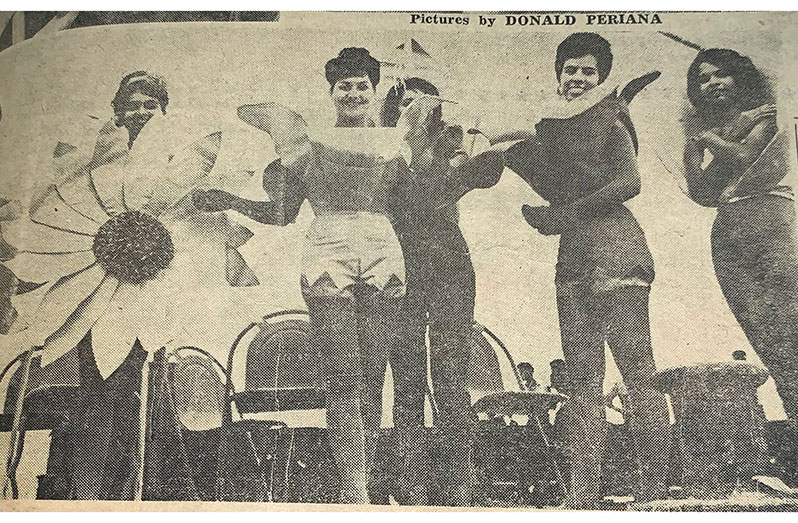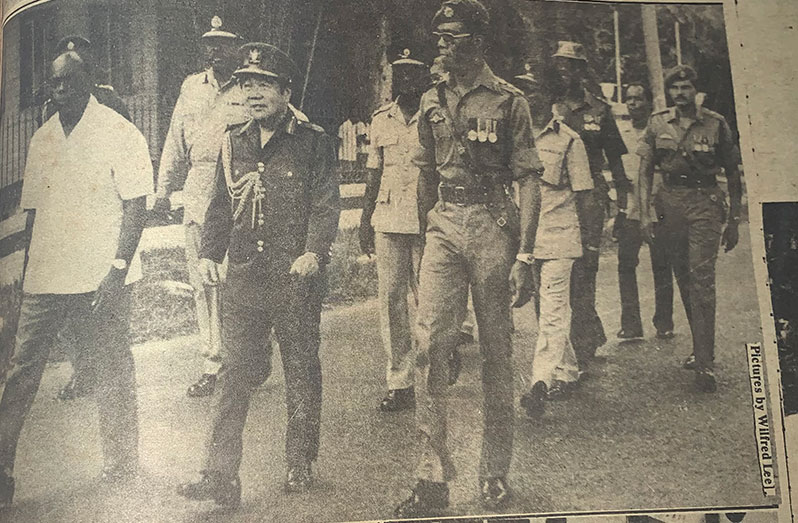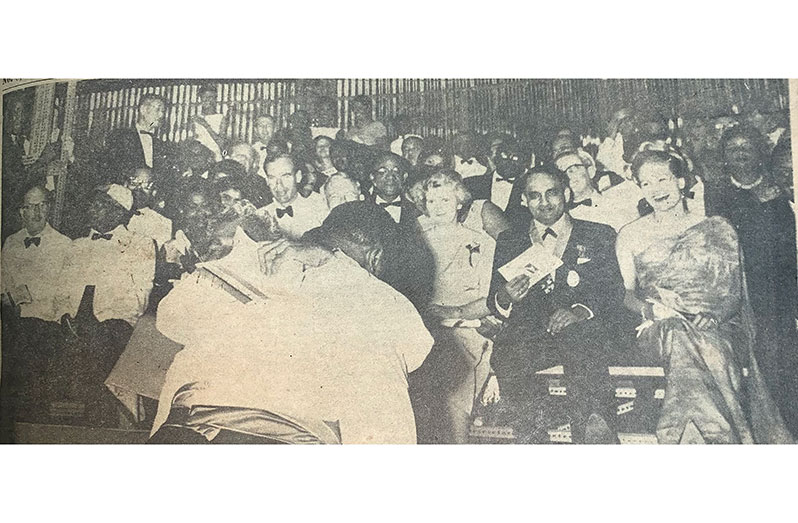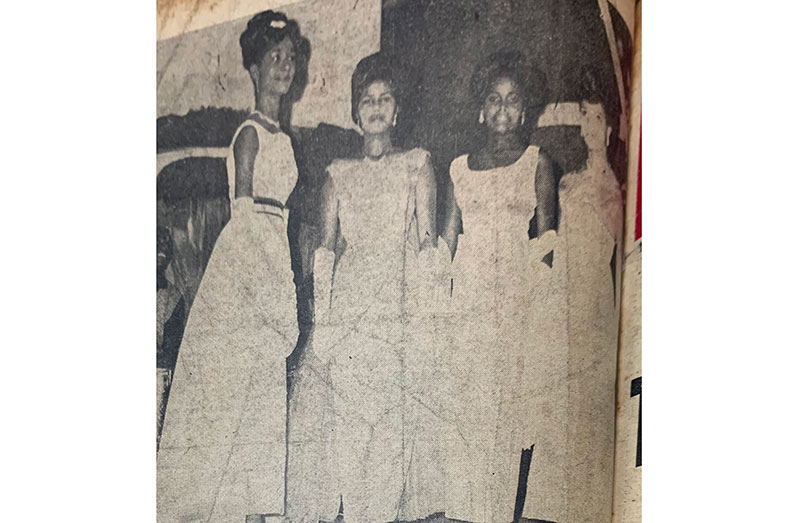AT midnight on May 25, 1966, scores of Guyanese gathered at the Queen Elizabeth National Park (now the National Park) to cheer with joy and a new sense of nationhood as the United Kingdom’s Union Jack was lowered and Guyana’s Golden Arrowhead was raised to end more than 100 years of colonial rule and herald a new era.
At another end of the country, veteran mountaineer Adrian Thompson led a party in the Pakaraima Mountains in western Guyana, and reached for the very first time the summit of Mount Ayanganna, where the Golden Arrowhead was also raised.
Meanwhile, then Prime Minister Forbes Burnham and Opposition Leader Dr Cheddi Jagan, publicly embraced each other at the flag-raising ceremony, signalling their satisfaction that Guyana had finally gained its political independence.
With the raising of the new flag, a carnival of colours from fireworks burst across the sky in various parts of the country. Then, around mid-morning, the State Opening of the Parliament of Guyana took place. It was preceded by a military parade, accompanied by much pomp and pageantry.
One of the highlights of the parade included the Water Pageant on the Demerara River and the Historical Pageant at the National Park. Some of the other events included carnival-style parties, exhibitions, float parades and public rallies
Even then, the independence celebrations began four days before and continued until May 29. The Public Buildings and business places were brightly decorated with streamers and buntings bearing the colours of the Guyana flag.
In 1966, when Guyana became an independent nation, the first-ever Mashramani celebration was held in the mining town of Linden, and was dubbed the “Independence Carnival.”
When Guyana became a republic in 1970, a newly formed committee later changed the name to “Mashramani.”
The unique name changes only added to the excitement for residents as the first ‘Mash’ on February 23, 1970, is said to have pulled one of the largest crowds in Linden.
After realising how much attention Mashramani was getting, a government official had several discussions with the Jaycees Republican Committee, the committee which was formed to organise ‘Mash’ in Linden, to take the event to the capital city, Georgetown.
Approval was then granted by the then Prime Minister, the late Forbes Burnham, for Mashramani to be a national event for the republic celebrations. The approval saw ‘Mash’ activities rotated among Linden, Berbice and Georgetown.
However, in 2016, under the David Granger-led APNU+AFC government, the annual Mashramani costume and float parade was switched from February 23 to Independence Day, to accommodate the 50th Independence Anniversary celebrations.
Fast forward to present, not much has changed with the traditional weeks of activities remaining in full swing with private and open parties, float parades, ‘tramps’ around the city, and pageants throughout the country.
For many Guyanese at home and abroad, this event will no doubt bring back memories of the joy and gladness first felt when the Golden Arrowhead was hoisted in 1966.
Flag-Raising Ceremony
Each year, on the eve of Guyana’s independence, a flag-raising ceremony is usually held at national venues in Guyana.
This event is a two-part programme that is held on Independence Eve to usher in the festivities. The cultural part of the programme is a colourful, artistic mass display of dances to patriotic and national songs, performed by young Guyanese.
These participants represent the National School of Dance, religious groups, schools, regional choirs, and steel bands
The ceremonial component includes a joint military band display, military parade, announcement of National Awards and performances. An address by the President is a staple, just before the hoisting of the Golden Arrowhead and fireworks display by the Guyana Defence Force (GDF).
Float parade
The float parade, in contemporary Guyana, was largely held on Republic Day, February 23.
Each band uniquely presented creative, expressive floats and symbolic costumes which celebrate Guyana’s beauty.
Also, there is the folktale Masquerade band featuring Mother Sally, Mad Cow, and others.
Guyana’s carnival-styled parades reflect a plethora of colours as the revellers in the various bands snake their way through the streets of Georgetown battling for top prizes.
Also, local designers and artists are given a chance to exhibit their creativity to showcase Guyana’s rich history and dynamic culture.
Dancing to the sound of soca music, the revellers and bystanders who join along the parade route, gyrate through the streets, while others watch on from the sidelines to get a glimpse of the glittery costumes depicting different messages.
For the patriotic Guyanese, parades are a time to revel and reflect. (This piece was compiled from stories and photos from the Guyana Chronicle archives)




.png)




